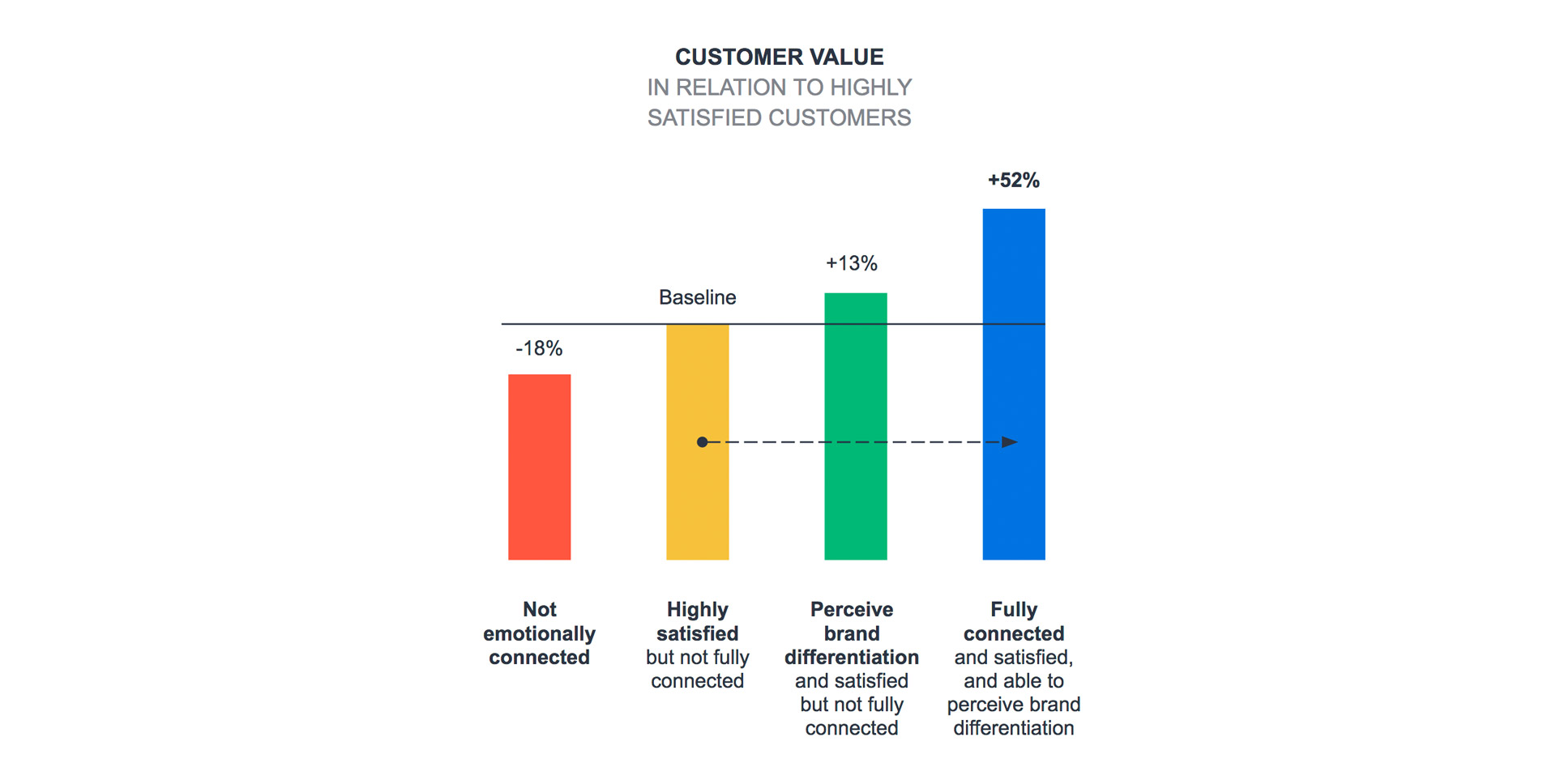
In the summer of 2016 I attended the Viva Technology Summit in Paris where I presented how Kairos is working [with retailers] to humanize artificial intelligence. The Viva Tech Summit is the largest tech event in Europe and is held to bring together “...innovative startups, influent companies, and bright minds”. You can see my original slides at the end of the article.
That being said, we decided to break down the barriers and simplify techy terms because the best way to humanize AI is to first humanize the conversation. We hope this discussion proves to be both informative and insightful for our readers and customers. And even though I presented what follows to leaders in the retail industry, we wrote it with any industry in mind.
Humanizing AI with Emotion Analysis
Kairos is a Human Analytics platform that uses face analysis to recognize and understand how people feel in videos, photos and the real-world. We measure identity, emotion and demographic data; these ‘human metrics’ can be used individually or in combination to gather unique & actionable insights about people as they interact with the world.
Today I will be discussing artificial intelligence and empathy. You might have heard the buzzword artificial intelligence, commonly known as AI. If you’ve heard it it’s because it’s here. We are using it daily, and it’s increasingly making our lives easier. At Kairos we are looking at the future of AI, we are integrating emotions into AI to make it even better.
Ask yourself, how do our customers feel about machines? Do they know what artificial intelligence is?
There has been a lot of talk about the NEED for machines to understand humans. There are a lot of things we are still learning about ourselves but we do know that a major component of what makes us human is our empathy. Empathy builds trust, it makes us feel connected, and it shows that someone cares. For us to feel connected to machines, to feel as if the machine understands us, the machines will need to understand empathy.
The first step of integrating empathy into your machine is integrating empathy into your business model. Ask yourself, how do our customers feel about machines? Do they know what artificial intelligence is? Do they care if a machine serves them instead of a human or paired with a human?
Your customer's answers to those questions can be addressed when creating your AI product/machine so that your customers will better relate to the machine, engage with it, and accept it into their consumer experience to the point that it becomes another ‘normal’ shopping tool.

Brian Brackeen, CEO of Kairos, on stage in Paris for the Viva Technology Summit.
“I’m sorry Dave, I can’t do that” - HAL 9000
So what do you do if you find that your customers are skeptical about the use of machines or are afraid of AI?
At Kairos, we ask “why?”.
We have found that most people are not truly scared of AI, but instead, do not fully understand AI and what it is. This, in our opinion, could be due to the robotic and machine-like stereotypes that are portrayed in the media and entertainment industries. Movies like, Minority Report, 2001 A Space Odyssey, Ex-Machina, and The Terminator are all examples of technology being used in a negative way that creates fear.
So, for retail customers to accept AI as part of their retail experience, they need to understand what AI is.
Artificial Intelligence is Many Things
Artificial Intelligence isn’t the only buzzword being thrown around, the others you may have heard are machine learning and deep learning.
Here is how we simply define these terms:
- Artificial Intelligence: Computer programs simulating human intelligence and/or behaviors.
- Machine Learning: A branch of AI that allows computers to ‘learn’ on their own when exposed to new data.
- Deep Learning: A branch of Machine Learning that is able to ‘learn’ patterns in lots of unstructured data.
By breaking down the definitions, in simple terms, you can show your customers that this technology is in place to help us, to allow us to be better in control and not the other way around.
“The development of full artificial intelligence could spell the end of the human race” - Stephen Hawking
Even after defining these technological concepts, you may find that your consumers still have some underlying fears, or as we like to call them common misconceptions.
A few popular consumer misconceptions include:
Machines will replace us in the job field and in turn take over the world
Machines must be made to look like humans, i.e robots, humanoids, etc.
Machines are scary and creep people out and so they will not be adopted into society norms.
AI is Here to Serve Us, Not Replace Us
The reality is, AI is already here, most of us use it every day, and it is here to make our lives easier. Do you have a smartphone? A tablet? Or a smart TV? Yes? AI is already built into your devices and someday a more advanced AI could replace all these devices, serving us in a better way.
I love Netflix, not only because of the convenience of watching a movie from anywhere but because it uses AI to suggest new movies and shows based off of what I have already watched. The same goes for Amazon Prime, it’s not by magic that it knows I need to refill on household items, it’s through AI.
Are machines replacing people in the job field? Yes, there are cases of that, but with every replacement comes new job creation and transformation. Machines being in the workplace is forcing humans to enhance our own capabilities. In a retail store if you have machines serving consumers you may want them to also collect consumer data. Let’s say you’re collecting emotional data. Who will analyze, transcribe, and translate this data? People. People are needed to make sense of what the machines are collecting and use that information to build better products, explain and use customer insights, and of course keep up repairs, training, and updates on the machines.
By explaining these terms and the reality of technology, consumers will start to understand AI better and be more accepting of it.
AI + Emotion Analysis
So, what does Kairos have to do with all this? We are measuring people in video, photos, and in the real-world by analyzing their faces.
Our Machine Learning algorithms are trained on natural settings and can be used in any device and design to help you better understand what your customers respond and don’t respond to. Our developer friendly APIs and SDKs means you can now build AI into your products and services with relative ease.
Emotion Drives Human Behavior
By allowing machines to learn about the nuances of human behavior, and not just the extremes, the machine itself may end up responding more affectively to the individual or group of consumers. This will soften the edge of new technology and make it more approachable, relatable, and trustworthy to consumers.
Emotional Connections Matter
As humans, we bond over experiences and emotional connections. Researchers show that moving customers from highly satisfied to fully connected can have three times the return from moving them from unconnected to highly satisfied.
The highest returns we’ve seen have come from focusing on consumers who are already fully connected to the category from maximizing value and attracting more of them to your brand.

Source 'THE NEW SCIENCE OF CUSTOMER EMOTIONS', Nov 2015.
What Version of My Display Converts More Shoppers?
In your stores, or in your store fronts, you may already have cameras, data platforms, and/or CMS driving smart signage which can work as the best display since it’s already part of your everyday customer experience. The next step is to enhance it with emotional AI.
From there you can start collecting data and compiling results as you figure out what your consumers like, don’t like, what they need, etc;
And Lastly, Empathy First
Like we mentioned before, addressing human empathy first makes all the difference. Not only does it help you connect to your customers but it also helps you understand their privacy concerns that come with new technology, especially AI. By understanding their concerns you can introduce AI without freaking your customers out.
Emotion analysis will give insights not only into customers buying patterns and decisions, but it will create a better AI experience for your customers. When customers see that AI has empathy built into it, they will develop a stronger relationship with your brand, empowering trust and deeper engagement.
As promised here's the slides from my talk:
If you liked this, you might like...
We wrote an epic 5 part series on Empathy and it's relationship to AI. It was our most popular blog series of 2016 and it's still going strong. Get started with the first article: Empathy in AI Series: Part 1, What is Empathy?

Brian Brackeen
Brian is the CEO at Kairos, a Human Analytics platform that radically changes how companies understand people.
